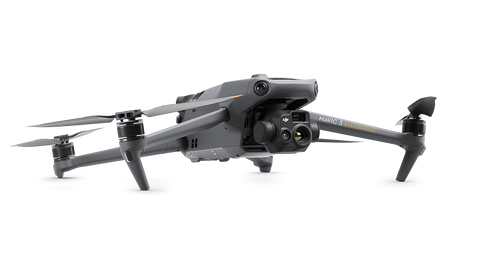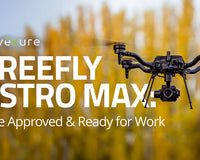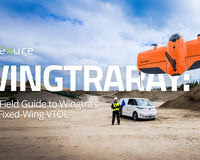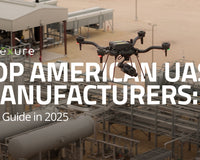In today's rapidly evolving technological landscape, the method of conducting roof inspections has seen a significant transformation, moving away from the traditional, labor-intensive approaches to a more innovative, efficient, and safer alternative.
At Advexure, we understand the pivotal role of cutting-edge tools to maximize your time and budget. In this blog, we’ll explore how drone technology is revolutionizing roof inspections, making them more accessible, accurate, and cost-effective.
From capturing high-resolution imagery to collecting thermal and LiDAR data, drones offer a comprehensive view of a roof's condition, identifying potential issues before they escalate.
Welcome to the future of roof inspections—safer, quicker, and smarter.
What are Drone Roof Inspections?
Instead of the traditional method of roof inspection, requiring an inspector or insurance adjuster to climb onto the roof with a ladder and inspect with their naked eye, a drone is used to collect inspection data (high-resolution photos/videos, thermal data, LiDAR data). This method of inspection saves time and money, produces better data, and is much safer.
Some common areas an inspector will look at for potential damage and wear are:
- Shingles
- Chimneys
- Flashings
- Downspouts
- Gutters
- Vents
- Skylight
This data is later analyzed and processed by a professional inspector in software like Pix4D or DroneDeploy.'

Why Conduct Roof Inspections?
Whether it’s a residential or commercial property, it’s important to look for signs of wear and tear that could be indicators for issues down the road. Some of the most common reasons for roof inspection are:
- Warranty protection: Property owners often need roof inspections on a semi-regular basis for their warranty to remain in effect
- Weathering: Weathering and wear can be easy to overlook, with missing shingles here and there. However, without proper maintenance, the roof's quality will gradually deteriorate, making way for much bigger problems down the road. Roof inspections can help spot problems and correct them before repair costs become even higher.
- Checking for Leaks: The inevitable result of a poorly maintained roof or sometimes inclement weather. The goal of the inspection is to spot and fix the leak.
- Drainage issues: detritus such as leaves or dirt can clog drains, spouts, and gutters, causing a buildup of water that will eventually leak through the ceiling and cause property-wide water damage. A roof inspection can help spot these buildups and clear them out.
- Maintenance/Contractor Damage: We’d like to give the benefit of the doubt to contractors we hire for work on our property, however accidents and mistakes do happen. If damage to a roof goes unreported, this can cause problems later on.
- Solar panel Installation: Adding solar panels to a property can help the property owner save on energy bills, and in some cases, increase the property value. There are requirements that need to be met, based on state and local ordinances before the installation can happen — the roof needs to be clean, in good condition, sloped in the right direction, and be large enough to accommodate solar panels. A roof inspection will help quickly ensure these things are in place.
- Preventative Maintenance: It’s never a bad idea for property owners to check their roof on a regular basis to spot wear and tear, and make fixes before a problem occurs, beyond the requirements of a warranty.

Why Drones? — Safety, Money, and Time
Now that you understand the importance of regular roof inspections, how do drones factor into the equation?
The most obvious answer is safety. You’re now able to collect the data you need safely from the ground without needing to climb a ladder and walk around on a roof. However, there are some less obvious advantages.
Here are the main benefits of drone roof inspections:
- Safety - by eliminating the need for a person to climb and go onto the roof, the entire inspection process becomes that much safer.
- Time - manual roof inspections require setting up a ladder, climbing on to the roof, looking for problems, and taking photos. This whole process eats up a lot of time. Meanwhile, drones can be deployed quickly to capture video and photos in a third of the time it takes for the traditional method.
- Money - increased efficiency means cost savings for the entire inspection and overall operations. While the initial investment in a drone may seem steep, the long term ROI is clear. As an insurance adjustor or inspector, you can now do more jobs in one day with a drone then you could with manual inspections. This translates to extra profit margins.
- Data Quality - With a drone, you can shoot video the entire time the drone is in the air, meaning you collect much more data than you would’ve just walking on the roof and taking photos. The quality and accuracy of that data is generally comparable, or in some cases, better than those of manual inspections. Modern drones are also outfitted with incredibly high resolution cameras that rival those on a DSLR camera.
- Accessibility - there are some roofs or areas of a rooftop that are simply not safe to access by a person (turreted roofs or steep pitches). These hard to reach areas often go uninspected in traditional manual inspections, which isn’t ideal, particularly for insurance adjustments. Drones solve for this by traversing difficult areas with ease.
Industries that rely on Roof Inspections
When we think of roof inspections, what generally comes to mind are home inspections. And while it can be argued that the majority of roof inspections are residential, there are other industries who rely on regular inspections.
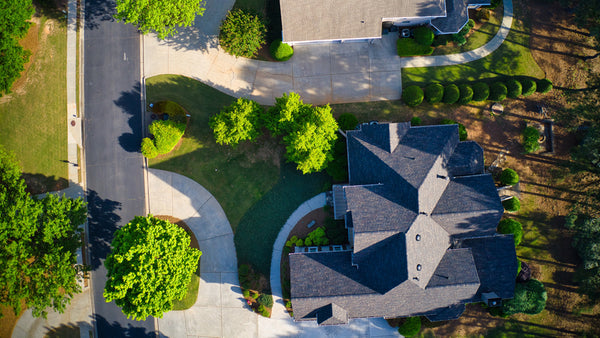
1. Home & Residential Inspections
Whether a homeowner is getting ready to sell their home, looking to buy a new one, or trying to spot problem spots before they become a larger issue, regular roof inspections are indispensable.
Gaining a comprehensive understanding of the condition of their roof arms homeowners with the information they need to avoid really costly repairs and keep their property safe and sustainable.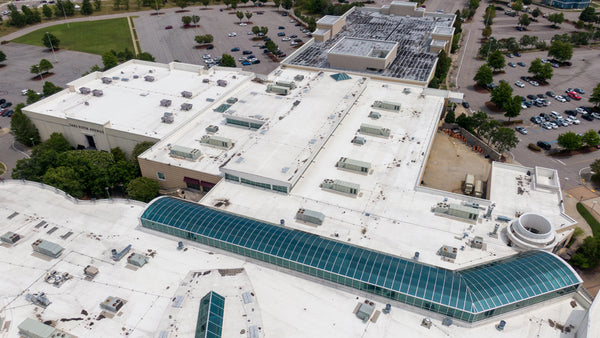
2. Commercial Real Estate
One of the key considerations for a company or investor before purchasing commercial property is the structural integrity of their potential investment, including the condition of the roof. An evaluation of the roof with a drone inspection can help buyers make an informed purchasing decision and negotiate intelligently before discovering issues after the sale.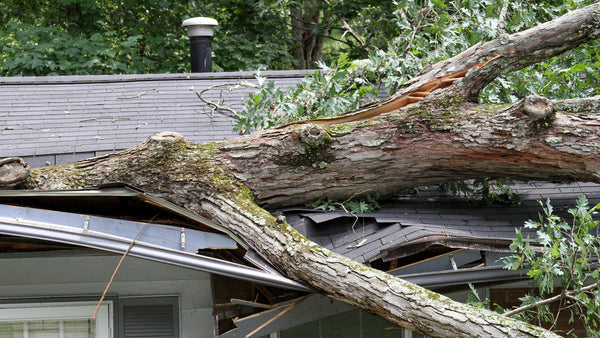
3. Insurance
Following severe inclement weather or a natural disaster, insurance companies will need to investigate claims of damage to a homeowner’s roof.
Rather than collecting the data in person, they can hire a drone inspector to quickly collect the information they need and process the data themselves without putting themselves in harm's way. This new workflow saves time and money for insurance companies.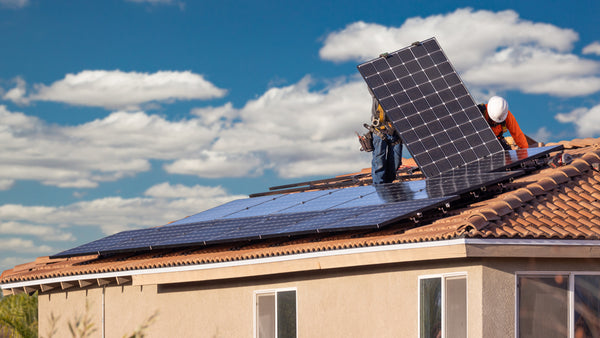
4. Solar
As previously mentioned, before solar panels can be installed on a property, the structural integrity of the roof needs to be inspected. A drone can help a solar company make a quick decision about whether a roof is a good candidate for solar.
The Best Drones for Roof Inspections
When selecting the best drone for the job, there are a few helpful considerations:
- Battery Life - Depending on the size of the roof or property, you’ll want to ensure you have ample battery life to make the most of your inspection, reducing unnecessary downtime to swap batteries.
- Flight Time/Endurance - For larger inspections, such as commercial real estate, it might be helpful to invest in a larger drone with longer flight times. For smaller home inspections, the maneuverability of a smaller drone might be more ideal, even with less flight time.
- Ease of Use - Conducting efficient and high-quality drone inspections means cutting down on unnecessary distractions. An easy to use interface on a flight controller can cut your learning curve down and help you get started faster.
- Camera Quality - Depending on the type of inspection, you’ll want to consider what your image quality requirements are. While it might be tempting to spring for a cheaper, lower cost drone, the drop in data quality may hurt you in the long run. You might also consider whether you need thermal imaging or the LiDAR for photogrammetry.
- After Sales Support - An important, but often overlooked consideration. How easy will it be for you to get support on issues with your drone, should they arise? What is the overall reputation of the manufacturer of your drone or the dealer you bought it from? Is it easy to find the information you need? At Advexure, we offer award-winning after sales support to our customers to ensure you have the tools and information you need to succeed.
Our Drone Recommendations
Featuring a 4/3" CMOS 20MP wide camera with a mechanical shutter and a 1/2" CMOS 12MP tele zoom camera with a powerful 7-56x zoom and a 36-42 minute flight time, the DJI M3E is one of the most versatile, quick to deploy UAS on the market. A favorite for surveyors and inspection professionals with the option for a RTK module add-on for centimeter-level positioning
The thermal drone counterpart to the M3E, the Mavic 3 thermal features a 1/2" CMOS 48MP wide camera, tele zoom camera and a 640x512 thermal sensor that supports point and area temperature measurement, high temperature alerts, and thermal palettes and isotherms. This is the best thermal camera you can get in a smaller format drone.
The flagship drone for DJI Enterprise, the M30T a versatile commercial drone featuring an integrated payload with a 48MP wide camera, a 12MP tele zoom camera with significant zoom capabilities, and a 640x512 thermal camera with a max flight time of 41 min and IP55 weather protection. This is ideal for larger inspections where thermal imaging and longer flight times are required.
If you’re not concerned about thermal imaging, collecting precise data, mapping capabilities, or are conducting simple visual inspections, you can save a little money here. The Mavic 3 Pro features a 4/3 CMOS Hasselblad camera, a medium telephoto camera with 3x optical zoom, and a telephoto camera with up to 28x hybrid zoom and up to 43 min of flight time.
How to Conduct a Drone Roof Inspection
Now that we’ve covered the benefits of drone inspections over traditional methods, why roof inspections are necessary, and the key industries that rely on this service, let’s talk about how to get started.
Step 1: Regulations and Legal Compliance
It might be tempting to purchase a drone and immediately start inspecting, but it’s important to be aware of specific regulations you need to follow as a commercial drone operator.
Prior to flying a drone for commercial purposes (roof inspections certainly fall in this category), a commercial drone pilot must obtain a Remote Pilot Certificate and register their drone with the Federal Aviation Administration (FAA). You will need to pass the Part 107 exam, which covers regulations, general aeronautical knowledge, the effects of weather on UAVs, radio communication, and pre-flight checks. Here is a great resource on how to obtain your Part 107 license.
You’ll also need to be in compliance with local drone laws in the area you’ll be flying in and obtain any airspace authorizations, be aware of altitude restrictions, and whether any Temporary Flight Restrictions (TFRs) are active.
Step 2: Pre-flight Checklist
Before your inspection, make sure you have everything you need by checking
- Batteries - Make sure your drone batteries and any backup batteries are charged
- SD Cards - Check and ensure your SD or memory cards have enough space for the data you will collect
- Weather - Make sure weather conditions and visibility are adequate enough for you to fly safely.
- Airspace - Make sure you have proper permissions to fly and check for TFRs
- Drone Check - check your drones airframe, propellers, and sensors to ensure your drone is ready to fly
- Firmware Updates - Connect your drone to your remote controller and ensure you are up to date on any firmware updates so you don’t waste precious time during the actual inspection downloading updates.
- Camera/Sensor Settings - check your drones’ camera settings to make sure they are ready to capture the video and photos you need for data collection.
Step 3: Make a Flight Plan
You’ve finished your pre-flight checklist, the weather looks good, and with Part 107 in hand, it’s time to fly. Before you send your drone up, it’s important to plan out your flight.
What areas of the roof will you inspect? Are there specific areas you want to focus on? What types of angles or perspectives do you want to capture? Do you need to collect thermal images or LiDAR data?
These are important considerations to plan out. Once you have a general plan in place, it’s a good idea to utilize mapping and photogrammetry software like Pix4D, Metashape, or DroneDeploy to help you plan and execute your drone’s flight path.
Step 4: It’s Time to Fly
You’ve planned out your flight path and you have a goal in mind for your inspection, it’s time to spin up and fly your drone.
Make sure you maintain situational awareness and communicate to others around you when you’re ready to deploy with call outs like spinning up, taking off, and landing.
You should also ALWAYS maintain visual line of sight of the drone to mitigate in-air collisions and keep everyone in the area safe.
While surveying the roof, it’s also good to be on the lookout for other potential issues or areas that need maintenance beyond your original inspection scope.
Step 4: Data-Processing and Reporting
Following your inspection, it’s time to process all of the data you’ve collected into a deliverable for your client.
Using photogrammetry software, you can stitch your photos together to create a comprehensive map of the roof.
Here are some of the common deliverables for drone roof inspections:
- Photos - no roof inspection is complete without clear, high quality photos of the roof
- Videos - videos can fill in the gaps where photos can’t by showing additional context.
- 3D Models - using LiDAR or photogrammetry you can now create a 3D model offering a comprehensive view of the whole roof.
- Orthomosaics - Made from multiple photos stitched together, orthomosaics can provide a detailed and accurate representation of a large area, such as a commercial property.
- Thermal - a thermal sensor on a drone can help you determine where heat is escaping from a building, see gaps in insulation, and find leaks. Ultimately this helps the property owner save costs on energy.
Once the data is collected and processed, you can generate a report for your client or pass along the processed data to a professional inspector.
Have Questions? Need Additional Help?
As we conclude our exploration of drone roof inspections, it's evident that this technology is not just a trend but a fundamental shift in how inspections are conducted. Drones bring efficiency, safety, and superior data collection to the forefront of the inspection process, making them an indispensable tool for professionals in the field.
If you're considering integrating drone technology into your commercial or enterprise work or have questions about navigating the complexities of drone operations, Advexure is here to support you. Our team of Part 107 pilots and seasoned industry experts are ready to guide you. Reach out to us today.



